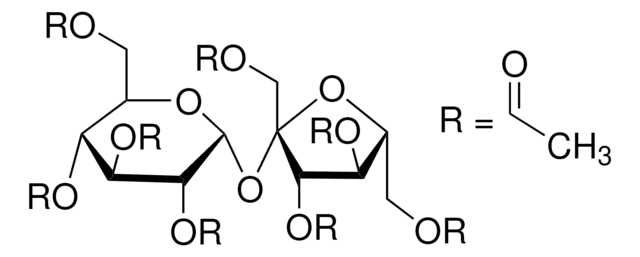1056504
USP
1,4-Benzoquinone
United States Pharmacopeia (USP) Reference Standard
Synonym(s):
p-Benzoquinone, ,5-Cyclohexadiene-1,4-dione, Quinone
About This Item
Recommended Products
grade
pharmaceutical primary standard
vapor density
3.73 (vs air)
vapor pressure
0.1 mmHg ( 25 °C)
autoignition temp.
815 °F
manufacturer/tradename
USP
mp
113-115 °C (lit.)
application(s)
pharmaceutical (small molecule)
format
neat
SMILES string
O=C1C=CC(=O)C=C1
InChI
1S/C6H4O2/c7-5-1-2-6(8)4-3-5/h1-4H
InChI key
AZQWKYJCGOJGHM-UHFFFAOYSA-N
Looking for similar products? Visit Product Comparison Guide
General description
This product is provided as delivered and specified by the issuing Pharmacopoeia. All information provided in support of this product, including SDS and any product information leaflets, have been developed and issued under the Authority of the issuing Pharmacopoeia.
1,4-Benzoquinone is a dark yellow powder having a green cast. It is slightly soluble in water and soluble in alcohol, in ether, and in fixed alkali solutions. It may darken on standing.
Application
Also ideal for use as a primary reference standard in the following tests or assays according to USP General Chapter <11>:
- pure steam
- water for injection
- sterile water for inhalation
- sterile water for injection
- sterile water for irrigation
- purified water
- sterile purified water
- water for hemodialysis
- <643>total organic carbon
Analysis Note
Other Notes
related product
Signal Word
Danger
Hazard Statements
Precautionary Statements
Hazard Classifications
Acute Tox. 3 Inhalation - Acute Tox. 3 Oral - Aquatic Acute 1 - Aquatic Chronic 1 - Eye Dam. 1 - Flam. Sol. 1 - Muta. 2 - Skin Corr. 1B - Skin Sens. 1 - STOT SE 3
Target Organs
Respiratory system
Storage Class Code
4.1B - Flammable solid hazardous materials
WGK
WGK 3
Flash Point(F)
170.6 °F - closed cup
Flash Point(C)
77 °C - closed cup
Choose from one of the most recent versions:
Certificates of Analysis (COA)
Sorry, we don't have COAs for this product available online at this time.
If you need assistance, please contact Customer Support.
Already Own This Product?
Find documentation for the products that you have recently purchased in the Document Library.
Customers Also Viewed
Our team of scientists has experience in all areas of research including Life Science, Material Science, Chemical Synthesis, Chromatography, Analytical and many others.
Contact Technical Service












